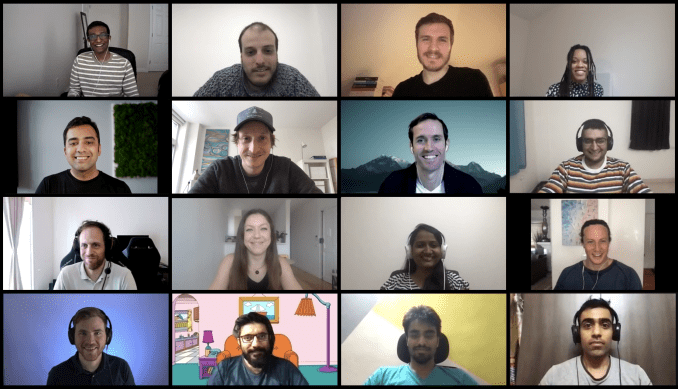Craig J. Lewis
Contributor
Craig J. Lewis is the founder and CEO of
Gig Wage, a simplified fintech payroll platform built for contract workers.
I’m a Black man in America — that’s hard. Black founders, and uniquely Black founders in tech, are facing insurmountable odds.
As the recipients of less than 1% of venture capital raise, institutionalized systems are visibly at play. Within almost 10 years of my entrepreneurial journey, I have encountered just as many setbacks and failures as I have successes.
However, I have pressed forward despite the disparities that often plague the Black entrepreneurial community. From imbalances in fundraising to minimal capital and access, Black brilliance and its cloak of resilience continues to rise.
Now, as a CEO who has ambitiously raised nearly $13 million for my current venture, against the odds, I posit that it is not the Black founders who are missing out the most — it is the investors who are at a loss, not comprehending that they have underestimated the power of these founders’ Black brilliance.
Black founders need to own their resiliency and leverage the power that has resulted from their unique experiences.
When you think about the intersection of venture capital and technology, and specifically how it works — it is being led from an engineering perspective. Developers and coders historically go to specific schools and colleges, entering a funnel that guides them to success.
Historically, many Black students (more so Black male students), are influenced by sports as a vehicle to higher education and not necessarily the institutions recognized for technological prowess.
Their parents and community encourage athleticism because that is the only thing they know — as an institutionalized mindset reinforced over time. Unless they are guided into the accepted foundations for technology, or get into a Cal Berkeley, Stanford or Harvard, where many of the technology companies are built, they are immediately funneled outside of the “circle,” which sets the first of many ongoing obstacles for a Black tech founder.
I offer, however, that these “obstacles” are not in fact barriers but the crucial catalyst for these founders’ superpowers.
Admittedly, there were no entrepreneurs in my family. I did not have access to information about the best colleges. Despite having great grades and graduating with honors, I was completely unaware of how valuable an Ivy League education could be.
As a star basketball player, with my skills and grades, I could have played and graduated from somewhere like Yale, Brown, Columbia or even a school like Southern Methodist University where I was offered a full scholarship. But because of the lack of knowledge that I could actually do so and benefit from being inside the Ivy League “circle,” I didn’t.
I was in college from 2000 to 2004. A lot of great companies were started at elite schools during that period. It is this institutional blocking of information from myself and many other Black students that molded our overall perspective and created our glass ceilings.
Breaking through that glass ceiling, overcoming these odds to press forward relentlessly, with unyielding focus, and to hold conversations with the types of investors I have had to sit in front of, with the type of company that I have built, takes a different level of brilliance that only the Black experience can provide. For 2021 and beyond, Black founders need to not only recognize, but unlock that power as they look to fundraise and catapult their tech companies to success. It would be smart, and incredibly beneficial for investors, venture capitalists and the entire entrepreneurial ecosystem to take heed.
For Black founders, a paradigm shift is evident, but it can only manifest if implemented in these five ways.
Black founders: Forget what you think works in fundraising
Black founders and specifically Black tech founders are fed a monotonous script of how to raise money “the right way,” in light of disparaging statistics highlighting a lack of funding — so much that there is a robotic approach to the process. They try to become this cookie-cutter entrepreneur that is designed to raise money from investors, with their playbook and by their rules.
Black founders capitulate and conform to what society has dictated as appropriate fundraising, often glorifying the investor with the fate of their startup in their hands, without realizing that they hold the negotiating power. Their playbook hasn’t won us any games. As of today, own your power.
Become an irresistible force: Leverage your expertise
Set the playbook aside and lean more into your expertise and uniqueness.
Years ago, Mark Cuban delivered a keynote address at Dallas Startup Week that chronicled his road to success. One of his main points was to “Know your business, and know your business cold.” It was so simple, yet so impactful.
Early on in my career, I learned about venture capital from my experiences working for a startup. While I did not know the area in depth, I referenced what little knowledge I had as I raised for my own company years later. Although I was limited in my dealings with venture capitalists, I was confident in my background and expertise (at that time as a payroll technology sales professional) to truly stake my claim and seat at the table.
So while they may have sold a company for $7 billion or have $35 billion AUM (assets under management), I knew that they were not as well-versed in payroll or payroll technology than I was. It was this tenacious mindset that made me look at investors, rather than up to them, thereby positioning us on equal footing.
Connect in the common goal of brilliance
As a Black founder in tech, I have encountered many injustices — from networking to fundraising to the game of business as a whole. Even among those sitting at the table, there is a plethora of worldviews, political preferences, religious propensities and more that create a melting pot of divisiveness. However, recognizing that the common thread between all of the players in the game is the desire to be part of the brilliant business opportunity at hand is what will ultimately prevail.
It served me well not to overindex whether the venture capitalists liked me or on our differences. Locking in on the ambition of my entrepreneurial spirit and focusing on my brilliance — my Black brilliance — made them want to invest in me. Simplistically, investors want to give their money to founders who will make them money — passionately and ambitiously. Be you and find the investor that appreciates you.
Get in front of as many investors as you can
Black founders are not getting in front of enough investors. Systemically, the venture capital landscape has marginalized this community and has failed to expand their network for inclusiveness. Currently, ethnic minorities are severely underrepresented in the venture capital industry. Eighty percent of investment partners are white, with only a staggering 3% being Black or African-American.
Regardless, Black entrepreneurs must press forward and still show up. The sheer number of people that entrepreneurs must face during the fundraising process is astronomical, so one must not be swayed by the disillusionment of opportunity.
Realistically speaking, it takes a long time to raise money. Period. I have talked to thousands of potential investors to raise nearly $13 million for my current company. If you are a Black founder, it is going to take you longer to fundraise and you are going to have to get in front of more people. So I ask, “Do you have enough oxygen in the tank to withstand the obstacles, for a long enough period of time, to attract the venture capital that you need?” The wealth gap says no.
When I first started Gig Wage, the number one question I received from investors is, “How much runway do you have?” I would answer, “Until I get to where I need to get.” They would then rephrase, “How much money do you have in the bank? How long is your wife going to let you do this?” I would reply, “It does not matter how much money I have in the bank because I’m going to keep going until this happens.”
Discriminatively, there was this unspoken expectation that I lacked the financial wherewithal and stamina to withstand the fundraising process, and at times it was extremely discouraging — because to be honest, when I looked in the bank account, I realistically had about nine to 12 months of runway.
The reason Black people raise less than 1% of venture capital is because the racism weaved into the fabric of American society bleeds over into the entrepreneurial ecosystem. Despite it all, I took thousands of meetings. I was willing to endure with an ambitious conviction that I was going to win. Again, this is Black brilliance.
Own your resiliency, own your power
As a Black man, I have personally endured challenges to build resiliency — mirroring similar realities of other Black men in America. Whether it was dealing with the police or witnessing men in my family struggle with drugs, violence, poverty or the like — I often think, “Why would I be intimidated by an investor meeting or a term sheet?” The construct of America has dealt me much worse.
Black founders need to own their resiliency and leverage the power that has resulted from their unique experiences. The victory mentality that ensues thereafter is the type of mindset that venture capitalists should want to invest in, and if they do not, they are undoubtedly missing out.
The unyielding focus of “The world is stacked against me but I’m not going to quit. I’m going to pivot. I’m going to be resourceful. I’m going to figure it out — even if I’m scared,” is a person you need to invest in. It is not necessarily that they have a groundbreaking business idea, but culturally, Black people have a passion and a perspective that is unmatched, with limitless possibilities that venture capitalists are overlooking.
So for 2021 and well beyond, Black founders, and those especially in tech, need to shift their respective paradigms, own their place within the entrepreneurial space, take back their power and continue to operate at the utmost in Black brilliance. It is the investors, not the founders, that are missing out. Be bold. Be courageous. Be audacious.
As for me, the best thing that I can do right now is to continue to drive the conversation, illuminate the disparities and be as successful for Black entrepreneurs, Black professionals and the world at large as possible. I am owning my power and I’m committed to epitomizing and evangelizing Black brilliance.







